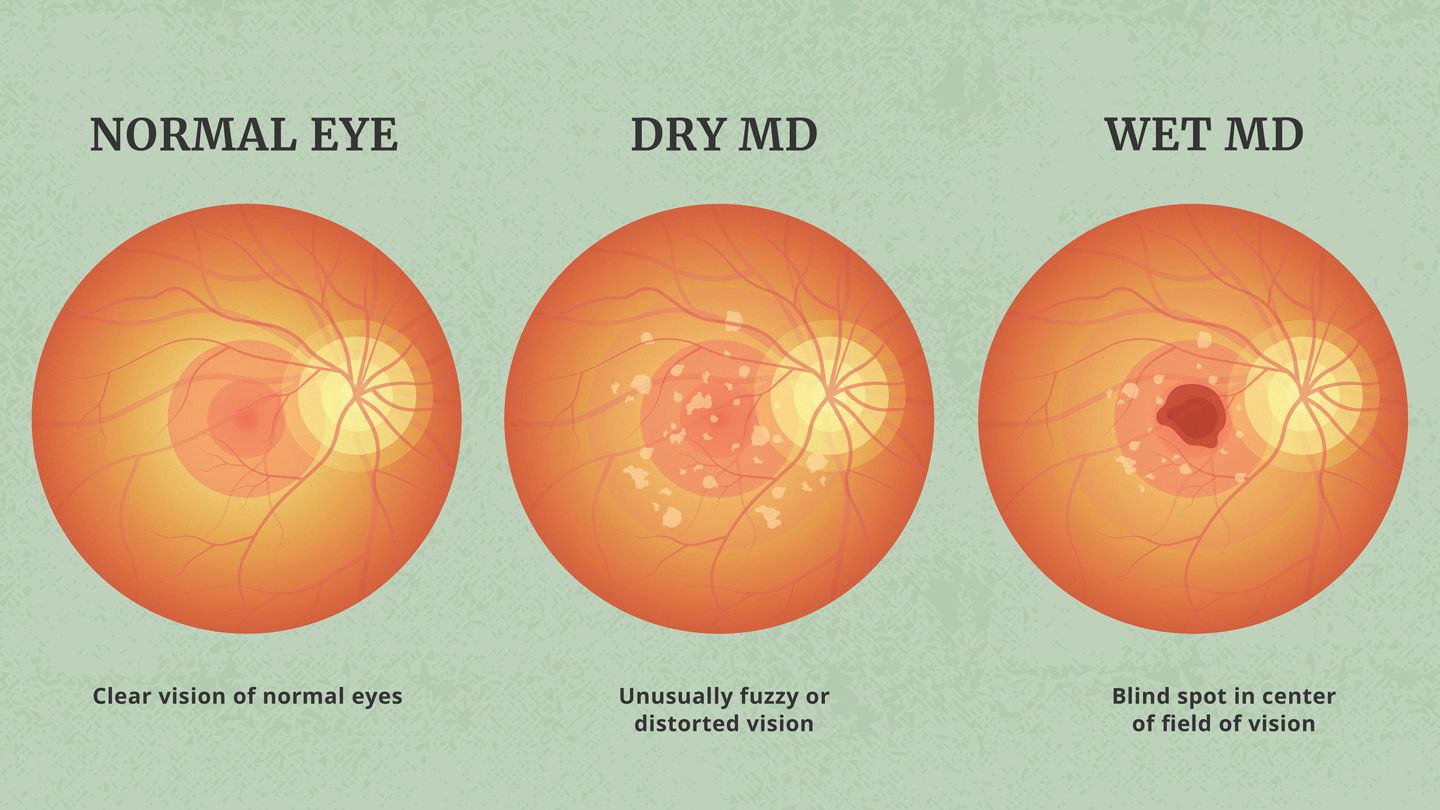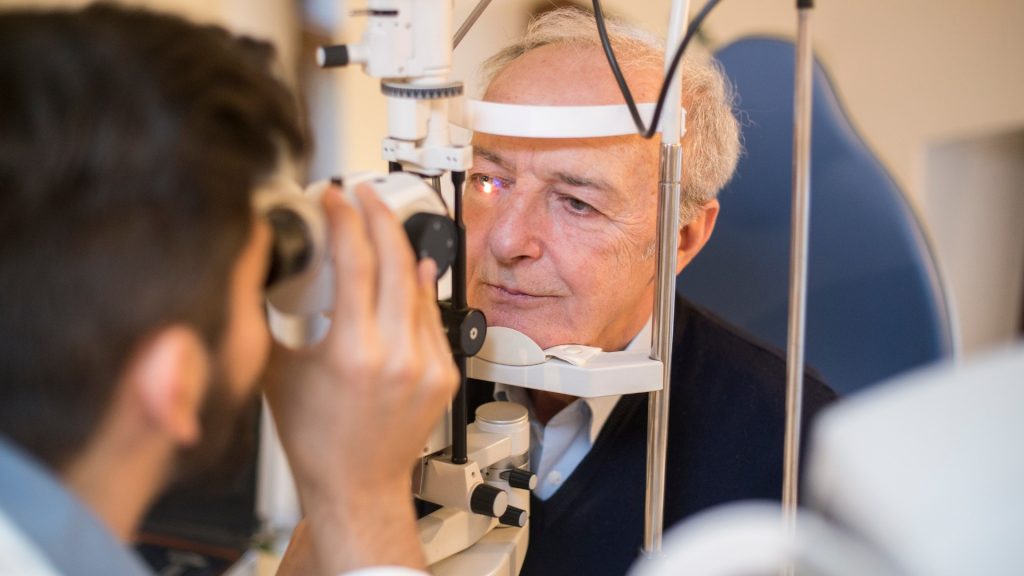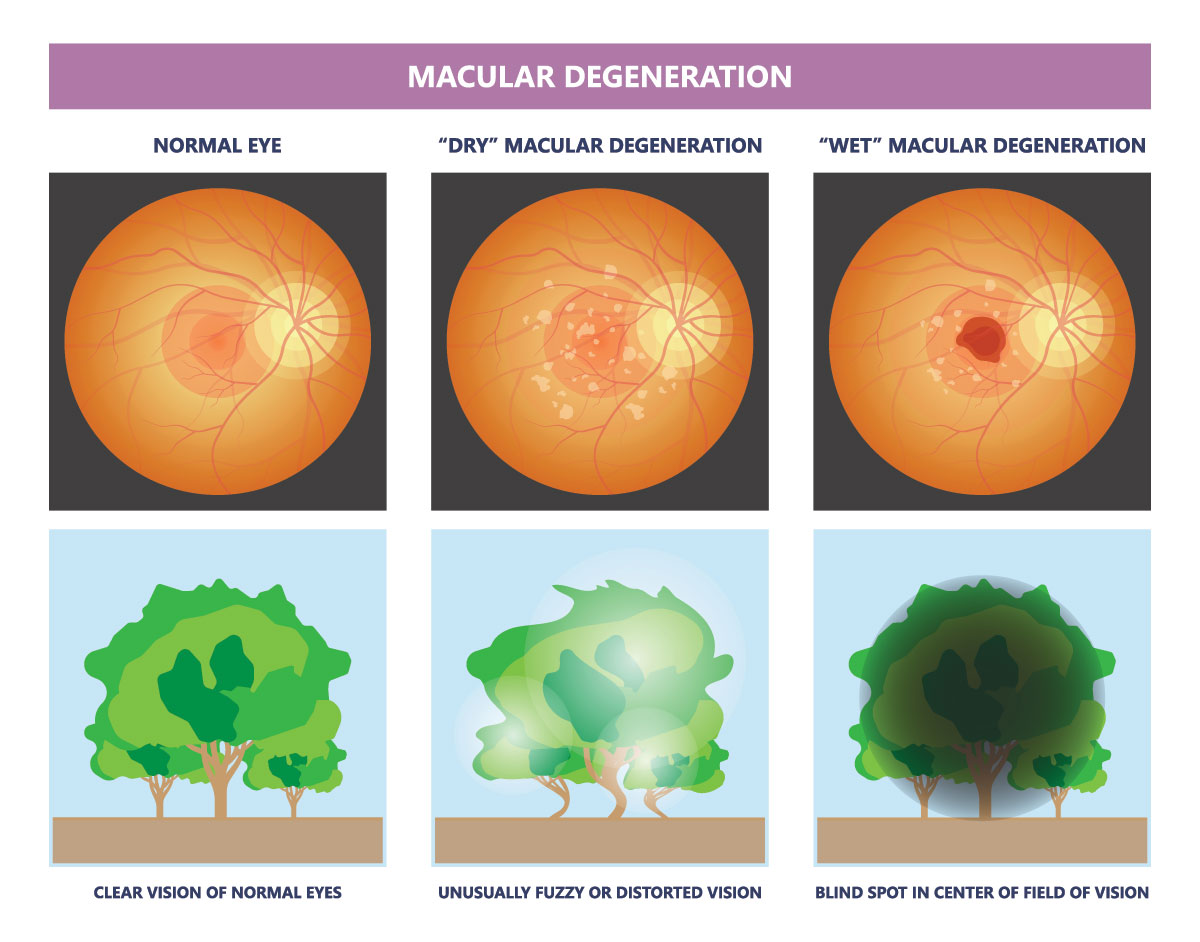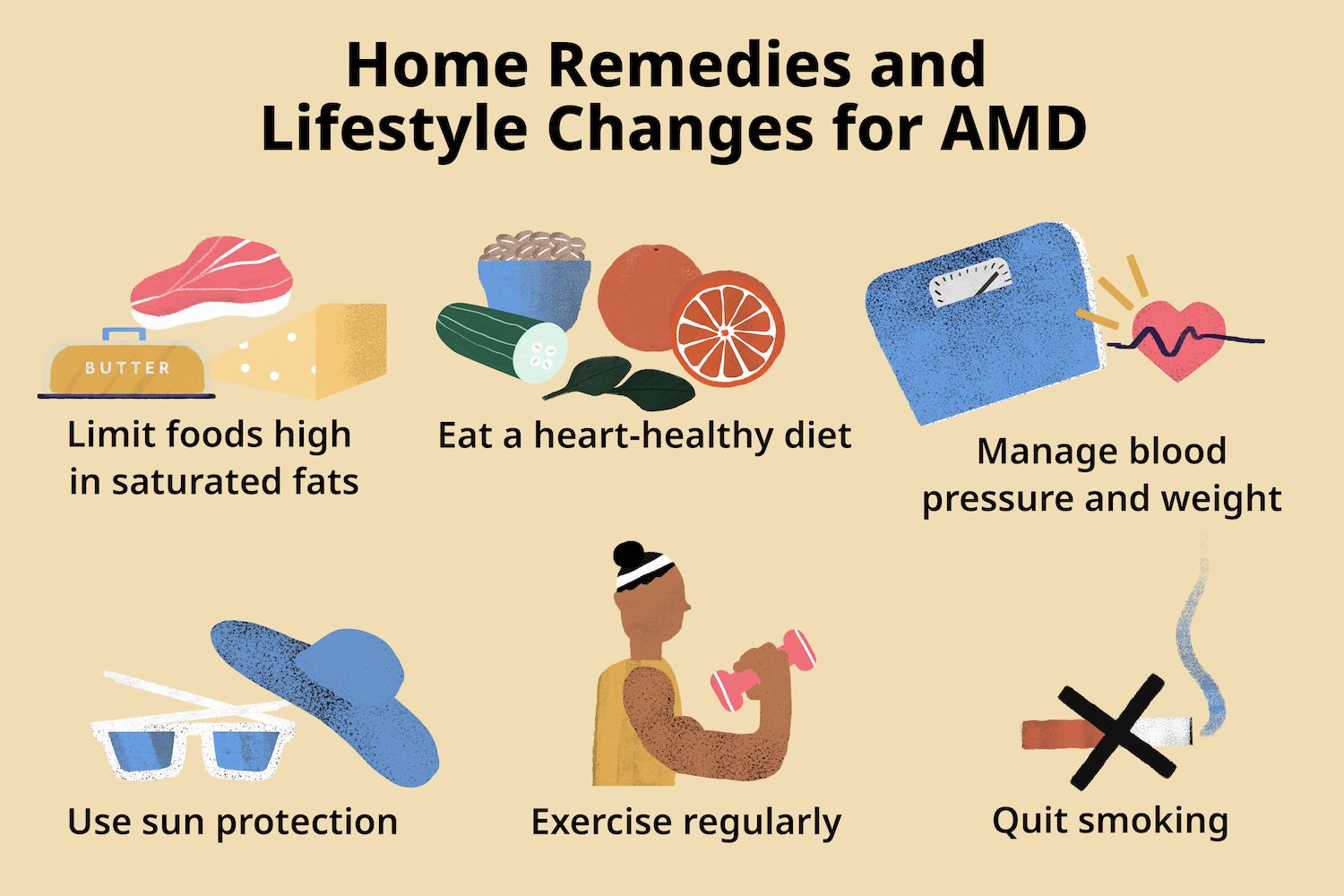Age-Related Macular Degeneration (AMD)

Age-Related Macular Degeneration (AMD)
What is AMD?
There are Two Primary Types of AMD:
Wet AMD (Neovascular): Although less common, wet AMD is more severe. It occurs when abnormal blood vessels grow beneath the retina and leak blood and fluid. This can lead to rapid and severe vision loss if not treated promptly.
Risk Factors for AMD
Certain factors may increase your risk of developing AMD, including:
- Age (especially after 50)
- Family history of AMD
- Smoking
- High blood pressure
- High cholesterol
- Obesity
- Sunlight exposure
- Gender (women are more prone)
- Light eye color
Risk Factors for AMD

Symptoms of AMD

Symptoms of AMD
The early stages of AMD may not display any noticeable symptoms, but as the condition progresses, individuals may experience:
- Blurred or distorted central vision
- Difficulty recognizing faces or reading
- Dark or empty areas in the central vision
- Straight lines appearing wavy
Prevention and Management
While AMD can’t always be prevented, there are steps you can take to reduce your risk and slow its progression:
- Maintain a healthy diet rich in leafy greens, fruits, and fish.
- Protect your eyes from UV rays by wearing sunglasses.
- Quit smoking and control blood pressure and cholesterol levels.
- Regularly monitor your vision and seek prompt medical attention if you notice any changes.
Prevention and Management

Treatment Options
The treatment of AMD depends on the type and stage of the disease. Options include:
- Lifestyle Changes: A healthy diet, exercise, and smoking cessation can help slow the progression of AMD.
- Anti-VEGF Injections: For wet AMD, medications that inhibit the growth of abnormal blood vessels can be injected into the eye.
- Photodynamic Therapy (PDT): This treatment involves laser therapy and a light-activated drug to destroy abnormal blood vessels.
- Low Vision Aids: Devices such as magnifiers and special glasses can help individuals with AMD make the most of their remaining vision.
It’s important to remember that early detection and treatment can make a significant difference in the progression of AMD and the preservation of your vision. AMD is a challenging condition, but with the right information, proactive care, and support, you can manage it effectively and maintain your quality of life.
Ready to Experience World-Class Eye Care?
Don’t compromise on your eye health. Schedule your appointment with Dr. El Khashab today and benefit from his expertise.
